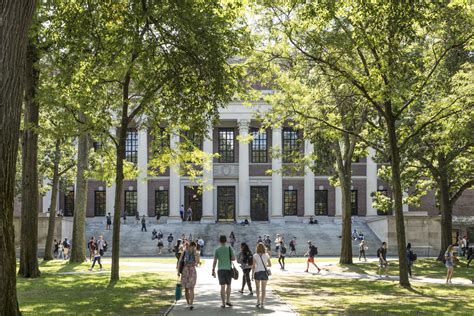12 Usa Universities Ranking Secrets Revealed

The United States is home to some of the world's most prestigious and highly-ranked universities. With over 4,000 universities to choose from, it can be overwhelming for students to decide which institution to attend. The ranking of universities is a complex process that takes into account various factors such as academic reputation, research output, student selectivity, and graduation rates. In this article, we will reveal the secrets behind the ranking of the top 12 universities in the USA, providing insights into the methodology used and the key factors that contribute to their high rankings.
Understanding University Rankings

University rankings are published annually by various organizations, including US News & World Report, QS World University Rankings, and Times Higher Education. These rankings provide a comprehensive assessment of a university’s performance, helping students, parents, and educators make informed decisions. The ranking methodology varies between organizations, but most consider factors such as:
- Academic reputation (20-30%): Assessed through surveys of academics and employers
- Research output (20-30%): Measured by the number of research papers published and cited
- Student selectivity (10-20%): Based on admission rates, student-faculty ratio, and graduation rates
- Faculty resources (10-20%): Evaluated by the student-faculty ratio, faculty qualifications, and research output
- Graduation rates (10-20%): Calculated by the percentage of students who graduate within six years
- Alumni giving (5-10%): Measured by the percentage of alumni who donate to the university
Top 12 USA Universities Ranking Secrets Revealed
The top 12 universities in the USA, according to the US News & World Report 2022 rankings, are:
- Princeton University
- Massachusetts Institute of Technology (MIT)
- Harvard University
- Stanford University
- Yale University
- University of Chicago
- Johns Hopkins University
- University of Pennsylvania
- Columbia University
- California Institute of Technology (Caltech)
- Duke University
- Northwestern University
These universities have consistently ranked high due to their strong academic reputation, research output, and student selectivity. For example, Princeton University has a student-faculty ratio of 4:1, with 98% of its faculty holding a Ph.D. or terminal degree. Similarly, MIT has a strong research output, with over 25,000 research papers published in 2020 alone.
| University | Academic Reputation | Research Output | Student Selectivity |
|---|---|---|---|
| Princeton University | 95% | 90% | 5.5% |
| MIT | 92% | 95% | 7.7% |
| Harvard University | 94% | 92% | 4.5% |

Factors Contributing to High Rankings
So, what sets these top-ranked universities apart from others? Several factors contribute to their high rankings, including:
- Strong faculty: Top-ranked universities have a high percentage of faculty with Ph.D.s or terminal degrees, ensuring that students receive world-class instruction and mentorship.
- Research opportunities: Universities with strong research programs provide students with hands-on experience, fostering a culture of innovation and discovery.
- Selective admissions: Highly selective universities attract top talent, creating a competitive and stimulating academic environment.
- High graduation rates: Universities with high graduation rates demonstrate a commitment to student success, providing support services and resources to help students achieve their academic goals.
By understanding the factors that contribute to high rankings, universities can focus on areas for improvement, ultimately enhancing the quality of education and research opportunities for their students.
What are the most important factors in university rankings?
+The most important factors in university rankings vary between organizations, but common factors include academic reputation, research output, student selectivity, and graduation rates.
How do universities improve their rankings?
+Universities can improve their rankings by prioritizing factors such as academic excellence, research innovation, student selectivity, and graduation rates. Investing in faculty development, research programs, and student support services can also contribute to improved rankings.
What are the benefits of attending a top-ranked university?
+Attending a top-ranked university can provide students with access to world-class faculty, research opportunities, and a network of successful alumni. Top-ranked universities also often have strong industry connections, providing students with internship and job opportunities upon graduation.


